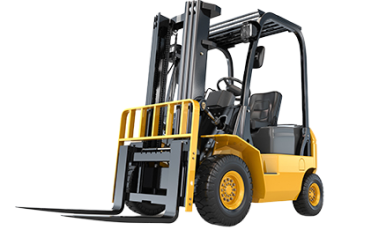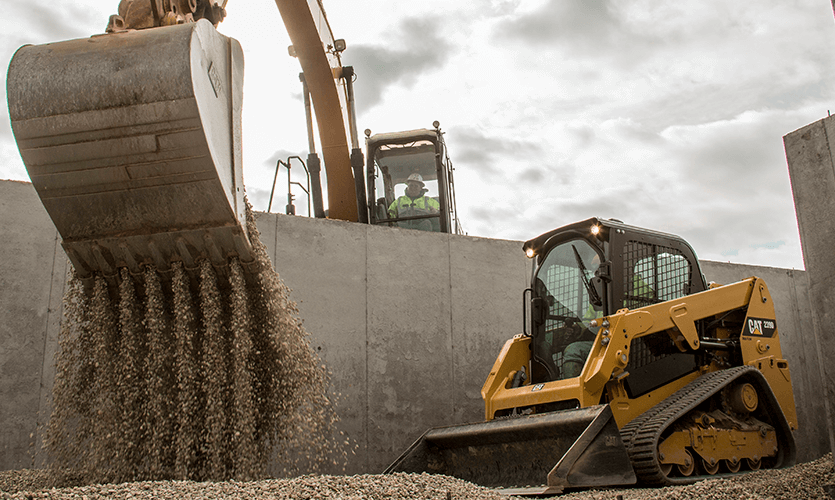Top-Rated Equipment Rental Company Near Me: Discover Forklift Rental and Aerial Lift Rental Today
Essential Tips for Managing Hefty Equipment Rental Contracts and Logistics Effectively
Properly handling heavy equipment rental arrangements and logistics is vital for the success of any type of job that depends on these sources. A complete understanding of rental terms, combined with exact evaluation of tools requirements, lays the foundation for beneficial negotiations. Furthermore, coordinating transport logistics and planning for ongoing maintenance can dramatically reduce unforeseen prices and hold-ups. However, the complexities of these aspects usually present difficulties that call for critical foresight. What are the key considerations that can transform these possible challenges right into opportunities for efficiency and cost-saving?
Understand Rental Terms
Recognizing rental terms is important for successful hefty tools management. The rental duration defines the duration for which the tools is rented, influencing budgeting and project timelines.
Furthermore, it is critical to comprehend the upkeep commitments detailed in the arrangement. Typically, rental companies maintain the tools, but comprehending who is in charge of regular checks and repair services is essential to stop operational disruptions. In addition, terms might consist of conditions worrying obligation for damages or burglary, which can have serious economic effects otherwise effectively recognized.
:max_bytes(150000):strip_icc()/Balance_Must_Have_Earth_Moving_Construction_Heavy_Equipment_844586-c5b6ac9e5c074c11ad41e9acaea8f099.png)
Assess Equipment Demands
Analyzing devices requirements is an important action for any job manager aiming to optimize source appropriation and improve functional effectiveness. This process includes a complete examination of the project requirements, including specific jobs, timelines, and the kind of equipment needed to achieve wanted outcomes.
Begin by determining the scope of the project and the tasks that will be carried out. Take into consideration variables such as the surface, the scale of operations, and any prospective challenges that can influence tools choice. Involving with staff member that will certainly run the equipment can provide beneficial understandings right into functional demands and preferences.

Next, assess the capacity and capacities of readily available equipment alternatives. It is important to match the appropriate equipment to the tasks handy, ensuring that it can take care of the anticipated workload without jeopardizing security or efficiency.
Additionally, variable in the rental period and regularity of usage. Recognizing these aspects can aid determine whether renting out or acquiring is the most economical option. By carrying out an extensive evaluation of tools requirements, task supervisors can make enlightened decisions that bring about boosted productivity and decreased functional expenses.
Negotiate Effectively
Once the devices needs are plainly determined, the next step entails reliable settlement with rental firms to secure favorable terms. Begin by researching numerous rental firms to recognize their rates structures, stock accessibility, and reputation.
When approaching the arrangement table, be clear concerning your needs, including the kind of tools, rental period, and any extra services you might require. This openness makes it possible for rental companies to supply customized services that can satisfy your particular requirements (dozer rental). Do not hesitate to ask for discount rates, specifically for long-term rentals or mass orders, as several companies agree to use concessions to protect larger contracts
In addition, consider negotiating terms related to delivery, upkeep, and insurance policy costs. These variables can considerably impact the total price and must be clearly detailed in the rental contract. Make certain that all agreed-upon terms are recorded in writing to protect against misconceptions and safeguard your interests throughout the rental duration. Efficient negotiation not just leads to price financial savings however also establishes a favorable connection with the rental company.
Coordinate Transport Logistics
Working with transportation logistics is a crucial element of managing hefty heavy crane hire devices rental agreements. Effective transport ensures that equipment is provided on schedule and in optimum problem, thereby reducing downtime and enhancing job effectiveness. To achieve this, it is vital to develop a detailed logistics intend that describes the whole transport procedure from pickup to shipment.
Begin by analyzing the specific transportation demands based upon the type and size of the devices included - aerial lift rental. Engage with reputable transport providers who focus on hefty tools to ensure they possess the needed knowledge and devices, such as flatbed trucks or specialized trailers. Go over aspects such as weight restrictions, course limitations, and called for authorizations to stay clear of unanticipated hold-ups
In addition, keep open interaction with both the rental firm and the transport copyright to work with timetables properly. Validate all information, including pickup and drop-off times, to ensure everyone is aligned and prepared. Last but not least, develop backup strategies to attend to any type of prospective disruptions, such as unfavorable weather pop over to this site or traffic problems, which might impact the transportation timeline. By meticulously working with transport logistics, you can promote the honesty of your rental agreement and promote smooth job execution.
Prepare For Upkeep and Support

Additionally, it is vital to connect directly with the rental supplier pertaining to upkeep duties. Some contracts might consist of upkeep as component of the rental solution, while in various other situations, the onus may fall on the renter. Recognizing these terms will certainly aid prevent unforeseen expenses and liabilities.
Additionally, having accessibility to technological assistance can be very useful. Make certain that the rental firm supplies 24/7 assistance or an emergency contact, permitting speedy resolution of any type of equipment issues. Educating your team on proper tools use and routine checks can additionally dramatically improve operational efficiency.
Verdict
In conclusion, efficient monitoring of heavy tools rental agreements and logistics joints on a complete understanding of rental terms, accurate analysis of equipment demands, and proficient negotiation abilities. Emphasizing clear interaction with all stakeholders remains vital in navigating the complexities of devices leasing and logistics management.
Properly handling heavy devices rental agreements and logistics is essential for the success of any kind of job that counts on these resources. By extensively examining and comprehending these rental terms, businesses can make enlightened decisions, alleviate risks, and guarantee that their heavy devices administration lines up with job objectives and monetary restrictions.Working with transport logistics is a critical aspect of managing heavy equipment rental agreements.In conclusion, effective management of hefty tools rental arrangements and logistics joints on a thorough understanding of rental terms, precise evaluation of equipment needs, and adept arrangement abilities. Highlighting clear communication with all stakeholders remains essential in navigating the intricacies of tools leasing and logistics administration.